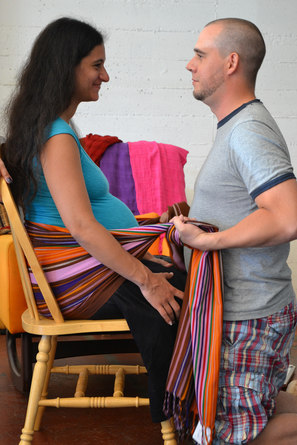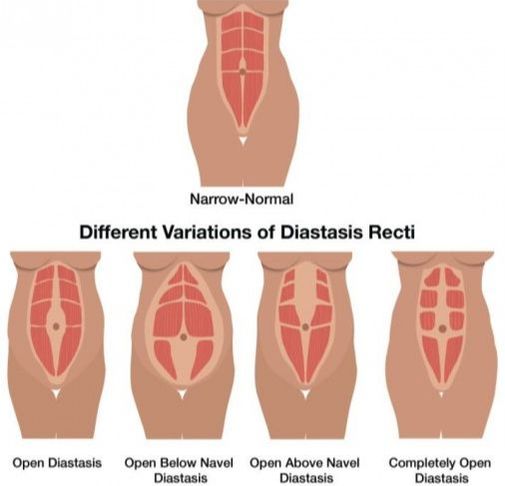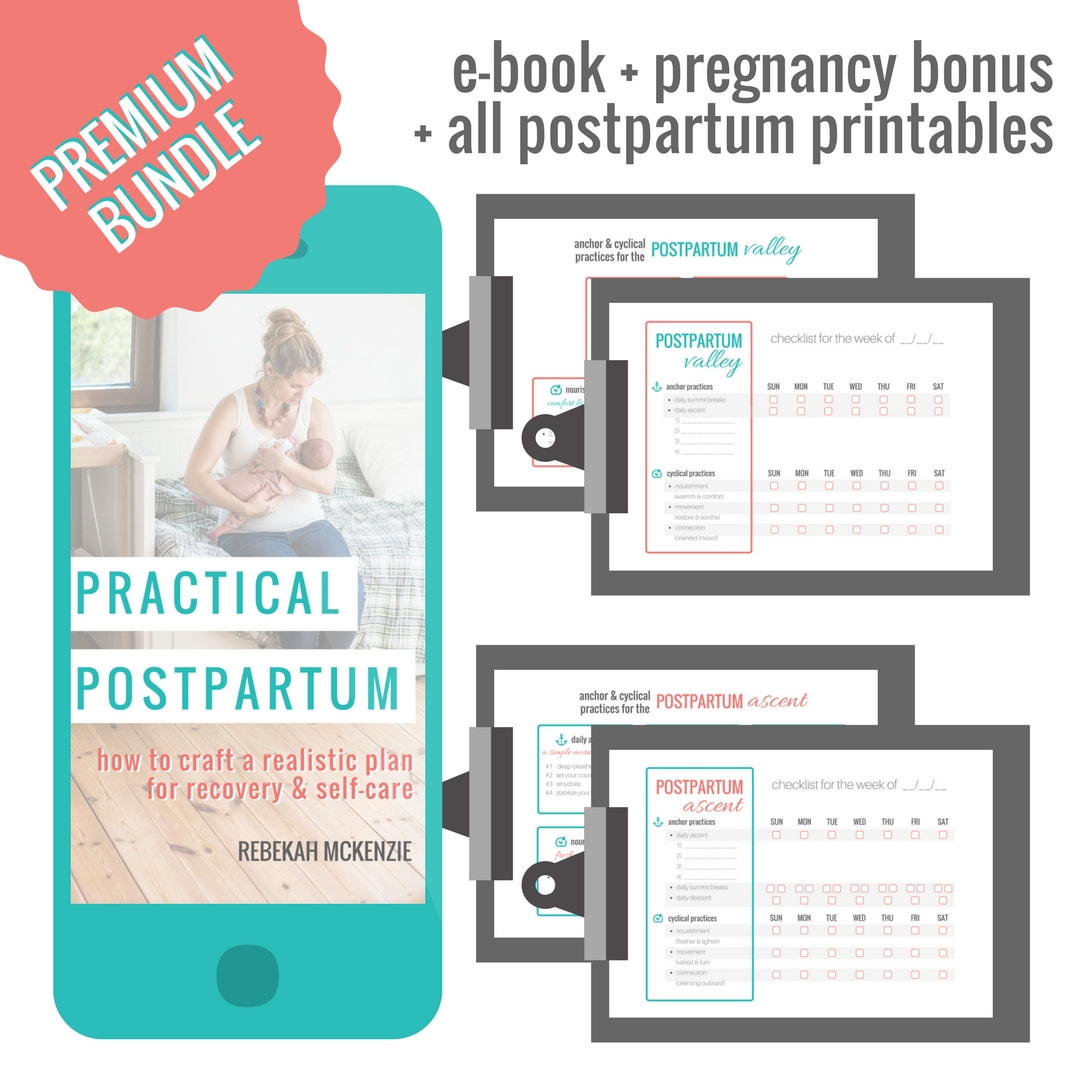 Christina, Professional Doula Christina, Professional Doula I had a client contact me saying, “I’ve been doing some research and I think I’d like to have a rebozo incorporated into my birth.” Thus, the search for a rebozo credential ensued. I found a great course created by birth superstar, Gena Kirby, and promptly joined. During the course, I learned so much more than just the basics of “rebozo”. Gena shared where the rebozo originated, all the ways it has been used over the years, and lastly how to use it to comfort a laboring mother. But what is a rebozo? Let's start with a little history lesson... A rebozo is a long piece of fabric, usually about 6 feet long or more. Women in Mexico have been wearing them for centuries. Originally thrust upon them by the Spaniards, they were required for religious reasons to cover their heads with a piece of fabric. The women eventually took it and made it their own. That’s how the “rebozo” came to be known. Each family had different patterns they passed down from generation to generation. Years ago, you could tell if a woman was married by how she would wear her rebozo. A rebozo is given in wedding ceremonies, women are buried in their favorite rebozo, still today in the event of stillbirth, rebozos are treated with herbs and essential oils and the baby is buried in it. The rebozo is more than just a piece of fabric; its sacred to the people in Mexico. But why (and how) would you use a rebozo during labor? During labor a rebozo can be used for SO many things:
Used in a labor setting the rebozo helps to bring the couple closer, and the techniques I share during a Rebozo Integration Session will ensure that even the most under-confident partner, can be hands on and supportive throughout labor and delivery. The rebozo helps make mom feel safe, calm, and comfortable. Mom needs her entire birth team to be confident and grounded, and taking my rebozo instructional session will help achieve that goal. This means that you can use a rebozo with or without the services of a doula! Rebozo isn’t just for labor! Rebozo if used properly can help relieve back strain and even that pesky belly pain late in pregnancy. When you take my private session, you will choose which rebozo you want, after labor and delivery you can use your rebozo for baby wearing. I will share with you how that can be achieved during our session as well. And maybe the very best part of our new Rebozo Integration service is that you receive a traditional rebozo of your very own to keep as a tool for your birth, your postpartum, future births, and as a treasured keepsake!
Are you curious about how a rebozo could play an invaluable role in your birth? Contact me today to schedule your session!
0 Comments
October 22, 2016 was the day I became a Mama. Tre (the hubs) and I woke up at 5:00 in the morning and packed our baby bag, favorite comforter, preconceived notions and headed to Baptist hospital for my scheduled Cesarean section. Had it been up to me I would have delivered in the ocean surrounded by dolphins and mother nature (yes I am that extra) but my child was stubborn from the beginning so that was not to be. We arrived with grandparents and doula in tow. Everything felt like some sort of dream, a mix of adrenaline and good drugs. All of a sudden I'm in the operating room and everyone is telling me how great I'm doing. I wasn't doing anything but I appreciated the words of encouragement. Lauren, our doula, was there and able to take pictures of the whole event and Tre was very brave throughout. We waited and chose not to find out the gender of our child until the day of so when the time came all of the doctors and nurses got quiet and called my husband around. He said"We have a son!" Our sweet baby boy Jeffrey was born at 7:17 and he weighed 8 pounds and 14 ounces. They laid that beautiful squishy mess on my chest and I was immediately in love. Now I know that new borns seldom open their eyes right after birth and they certainly don't raise their heads but mine did. My Jeffrey raised his head and looked straight into my eyes.
Everything after that is a blur. Tre got to tell the packed waiting room the excellent news and I swear you could hear the screams of joy and laughter down the hall. Of course friends and family from all around came to see the new little one and I didn't mind. I know some people find it overwhelming and I can certainly see why but for me I was so happy and proud that I wanted to show him off to everyone. Eventually the crowd diminished and it was just us three. We were elated, terrified, exhausted, and forever changed. Jeffrey will be two in a couple weeks and he is still the most amazing thing I've ever seen. He makes everything better. He makes me love my husband more for how wonderful of a father he is, he makes me cherish the time I do get alone, he makes the world better, and he makes me a better person. I did not get the birth I planned but I did get an amazing birth and an amazing human being that wakes me with kisses and shares his partially eaten Cheerios with me. Thanks to everyone who helped that day and everyone who continues to help.  Candace Rorrer, Certified Exercise Physiologist, BS in Exercise Science Candace Rorrer, Certified Exercise Physiologist, BS in Exercise Science With all the changes that take place during pregnancy there are also things you experience after pregnancy that you didn't have before being pregnant. You find your body doesn't feel the same as before. Even after losing weight, your stomach may feel very loose and you may feel like you have a pooch you just can't seem to get rid of. You may even experience low back pain and have pelvic floor issues, like leakage when you jump, cough, sneeze, or laugh. I have heard time and time again from clients that ask their doctors about their stomach and they are told that the only thing that will help is having a tummy tuck or there just is no fixing it. I am here to tell you that is absolutely WRONG! The symptoms I mentioned above are all signs that you might have Diastasis Recti. This is a separation of the abdominal wall. Some women have no trouble and the abdominal wall goes back together with no problem and others like myself still have some separation or complete separation afterward. This is when continuing a regular workout should be done with caution (no crunches or planks) and you should find a corrective exercise specialist to rehab your diastasis recti back together. What is Diastasis Recti? The word diastasis means separation. The recti muscles are the outermost abdominal muscles. So, it is a separation of the outermost abdominal muscles. When the muscles separate the connective tissue (linea alba) joining these muscle stretches sideways. The job of these muscles (called rectus abdominis), is to support your back and your organs. So why should you care if your muscles are separated? Because separated muscles are weak muscles. Separated muscles cannot do their job of supporting your back and organs. To achieve a strong core, your muscles must be close together. The sideways stretching of the connective tissue causes it to become thinner and weaker. So, what happens is this weak saran wrap-like connective tissue is NOT effectively supporting your belly button, back and organs. They are only supported when the muscles are close together. "100% of women have some level of diastasis of the rectus abdominis in the third trimester.(Gilliard and Brown 1996, Diane Lee 2013.) Importantly, for many women the gap remains widened at 8 weeks, and left untreated, this distance at 8 weeks remains unchanged at 1 year postpartum. (Coldron et al 2008, Liaw et al 2011.) 66% of women with diastasis recti have some level of pelvic floor dysfunction (Spitznagle et al 2007). Diastasis recti and pelvic floor problems tend to go together." MuTuSystem How to test for Diastasis Recti
This simple self-test will help you determine if you have diastasis recti.
Exercises to Avoid Crunches, planks, bicycles, sit ups, abdominal machines, ball crunches, etc. This is not a comprehensive list, but similar exercises should be avoid. You don't want to put more strain on these muscles that are already very weak. Those types of core exercises are only going to cause more separation instead of strengthening them. Exercises for Diastasis Recti Exercises that will help heal the diastasis recti are pelvic tilts lying on the floor with knees bent, heel slides starting with one leg at a time and making sure that your back remains with a natural arch, exercises that engage the transverse abdominals. I am excited to announce that I will be a PostPartum Corrective Exercise Specialist in just a few months and will be able to help other with diastasis recti, leakage, prolapse, and pelvic floor issues. Contact me through my website, www.essentiallyfitpcola.com! If you live in the southeast United States, it's safe to say that you've heard about the imminent threat from a wandering monster of a hurricane named Irma. There's a meme floating around Facebook that says something along the lines of "you know you're a Floridian if you find out a hurricane is now a category 3 or higher and now you have to care." While winging it *might* be a (sometimes misguided) option for some folks, parents of small children and pregnant women should be especially prepared for whatever emergency situations they might face--especially with the hurricanes, earthquakes, flooding, and wildfires happening around the United States right now.
Evacuation Usually evacuation wouldn't be the first thing on the list of things to consider, but this may be on the top of the list for pregnant moms who are especially vulnerable in situations where access to emergency services, basic utilities, or safe travel cannot be guaranteed. For instance, a strong hurricane can produce extremely low barometric pressure, which in turn can produce labor (even prematurely). Being caught in a situation where the baby might be born without access to emergency services, the hospital, or even electricity is certainly not the safest option--especially if there are birth complications. So what is a mom to do if she needs to evacuate for emergency reasons, especially if her due date is looming?
If You Stay... For some, staying put may be the only option. If you do, consider the following, with the understanding that emergency services and utilities may still be spotty or nonexistent for hours, days, or even weeks after a disaster. Most local government agencies recommend preparing just like you will be on a camping trip in a remote area for at least 72 hours, if not longer.
And always remember--don't be scared, just be prepared!!  Amber, ICCE, ICD Amber, ICCE, ICD Anyone who has ever given birth can attest that the grueling transformation that takes place during pregnancy, birth and the postpartum is undeniably one of the biggest, most intense experiences of their lives. But so many clients ask, "What is labor like? What does it feel like?" As someone who has given birth four times, how do I adequately explain it? What can I compare to the sensations of opening and releasing, of expansion and contraction? How do I describe the feeling of being overwhelmed while being in control, the idea of working alone while surrounded by a circle of supporters? Birth is just like a marathon I adopted this description a couple of years ago after realizing how many similarities birth and marathons have in common. I only loved this comparison more when a University of Michigan study came out this year that declared that giving birth can actually be harder than running a marathon. But what does running a marathon and giving birth really have in common (especially for those of us who aren't exactly, ahem, running types)? Discovering what actual marathon runners have to say about running and applying their wisdom to birth was quite enlightening. The Desire "You should run your first marathon for the right reasons, because you'll never be the same person again. You must want to do it, not do it because your boss did it or your spouse did it." - Bill Wenmark, running coach There is no way you could catch me running a marathon because I WANT to. In fact, I absolutely DO NOT want to run a marathon. Ever. COULD I run a marathon? I have no doubt I could--but it would not be my most glorious memory ever. In a lot of ways, birth is dependent on personal desire. Not just IF you want to do it (cuz you kinda have to if you've got a bun in the oven) but how you want to go about doing it. Now let me be clear--we aren't just talking about natural birth, although personal desire is the number one motivating factor in having an intentional natural birth. But you cannot go into birth expecting to do it a certain way just because someone you know did it, or you perceive it to be the way you should do it, or the way someone else wants you to do it. One big difference between a marathon and birth is this: there are no winners or losers, no failure, no shortcoming in birth. But finding the best way for you to run your marathon the way you want to will drive you to finish the act of giving birth when the going gets tough--which it almost certainly will. The Mentality "I've learned that finishing a marathon isn't just an athletic achievement. It's a state of mind; a state of mind that says anything is possible." - John Hanc, running writer Ever seen the episode of How I Met Your Mother when Marshall is training for the New York Marathon? He reads all these running books, and one of the things he learns to do is to repeat positive affirmations to himself (in the mirror) on a daily basis. Well guess who else can benefit from doing this?? Pregnant women! Part of my work as a childbirth educator is to help eliminate the culture of fear surrounding birth; to help women build their sense of strength and confidence in their ability to birth their babies however they choose. This involves not only creating a positive state of mind regarding birth, but also eliminating negative voices implying failure, fear, or harm. Is a marathon a scary event to be avoided?? No! (Well, for me it might be.) The Preparation "Virtually everyone who tries the marathon has put in training over months, and it is that exercise and that commitment, physical and mental, that gives meaning to the medal, not just the day’s effort, be it fast or slow." - Mary R. Wittenberg, former president, New York Road Runners Club Who can literally jump off their couch and run a marathon without any physical preparation? The answer: no one (except for Barney, if you watch that marathon episode of How I Met Your Mother). Just like a marathon, birth requires physical preparation. Pregnant women should be exercising no less than they were prior to pregnancy, which involves a minimum of 30 minutes of exercise three times a week. And just like a runner prepares for a marathon, a pregnant woman should prepare for labor by eating lots and lots of protein (the body needs long-lasting fuel that will build the growing muscle mass in her and her baby's body) in the months leading up to labor--aiming for 100 grams a day. And then, just like the night before a big run, she should switch to carb loading during labor--carbohydrates will provide fast, short bursts of easy-to-use fuel which is exactly what the body needs during intense physical exercise! The Pace "I tell our runners to divide the race into thirds. Run the first part with your head, the middle part with your personality, and the last part with your heart." - Mike Fanelli, running club coach Funny, isn't it, that labor is broken into thirds too--early labor, where there's plenty of time to think and be aware, active labor, that requires more concentration, and transition that involves a total surrender to the process. "If you feel bad at 10 miles, you're in trouble. If you feel bad at 20 miles, you're normal. If you don't feel bad at 26 miles, you're abnormal," Rob de Castella, the winner of the 1983 World Marathon Championships said. Huh. Sounds about right. One of the most common mantras we use during birth is to take one contraction at a time--don't think about how many you have left or how long this could last. Do the one you have to do right now. How interesting that Ryan Hall, a U.S. Olympic marathoner thinks the same thing about running a marathon: "I don't think about the miles that are coming down the road, I don't think about the mile I'm on right now, I don't think about the miles I've already covered. I think about what I'm doing right now, just being lost in the moment." The Pain is Productive "At mile 20, I thought I was dead. At mile 22, I wished I was dead. At mile 24, I knew I was dead. At mile 26.2, I realized I had become too tough to kill." - Unknown I couldn't tell you the number of times a mom has looked at me and said, "This hurts so bad I just don't think I can do this anymore!" There are only two things (that I can think of!) that are painful but NOT inherently harmful to our bodies: birth and exercise. Just like working out, birth is creating a change in muscular structures that have to exert significant effort to create that change. In fact, the pain of labor is credited in large part to the emission of lactic acid--the chemical that builds up in the muscles when they are tightened and released over and over. Ever been super sore the day after working out? Yup--just like labor, the pain comes from the lactic acid build up in the muscles. And just like a marathon runner experiences the oxytocin and endorphin high of running across that finish line, the incredible feeling of relief after giving birth is what makes people do it again! The High
"The thirst you feel in your throat and lungs will be gone minutes after the race is over. The pain in your legs within days, but the glory of your finish will last forever." - Unknown "There isn't a trophy for giving birth!" Um, excuse me?? I have heard this statement specifically made about natural childbirth ("there's no special reward for giving birth naturally!") but I beg to differ. First, it's much more complex than getting a reward if you go without meds, and no reward if you don't--remember when I said there is no failure or losing in childbirth?? That must mean that EVERYBODY wins!! At the end of birth, you have just accomplished an incredible feat of nature, no matter how you go about accomplishing it. And the relief you get from finally being DONE after the long months of building a baby, and finally having your baby in your arms and out of your body is your trophy. Plus, the nice rush of endorphin-producing oxytocin you get is pretty awesome too. Although with that relief is often a convincing declaration, "I'm NEVER doing this again!" (Even though you'll gradually forget the pain, and your ovaries will start to quiver every time you see a baby.) After winning her first New York Marathon Grete Waltz declared, "I'm never going to run this again." And then she went on to run and win eight more. So the bottom line is...if you are giving birth, you are basically an extreme athlete, no matter how you go about it. And just like any other athlete, you need a coach! And luckily, that's what we are here for. We're the ones who will get you a cool washcloth to wipe the sweat off your face, we are your water stop, the ones reminding you that you can do it from the sidelines, the team car rolling along next to you in case you need more help. Please let us know if there is any way we can help support you as you train, prepare for, and run your birth marathon! |
This is us.We are Women. We are Moms. We are here to help your family blossom. Archives
September 2019
Search
All
|
Building 4
Pensacola, Florida, 32504
We proudly provide
Childbirth Education, Placenta Encapsulation, Lactation Consultations & Doulas
in Pensacola, Milton, Pace, Gulf Breeze, Navarre, Crestview, Ft. Walton, Florida.
Copyright 2017, Belly to Cradle, LLC.
Photo Credits: Kayla Reeder Photography, Lynette Sanders Motherhood Photography,
Savanna Morgret Photography, Finding Beauty in the Ordinary Photography,
& New Light Birth Photography
|
|





















